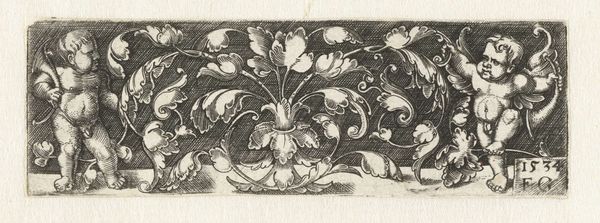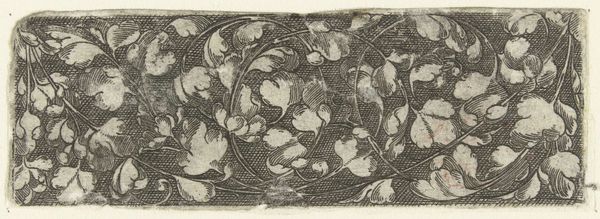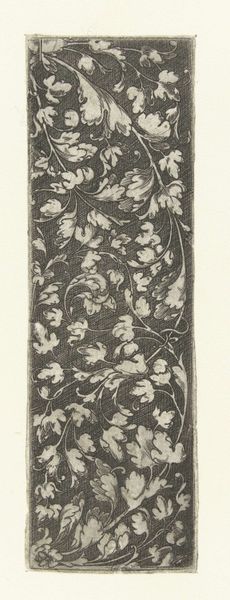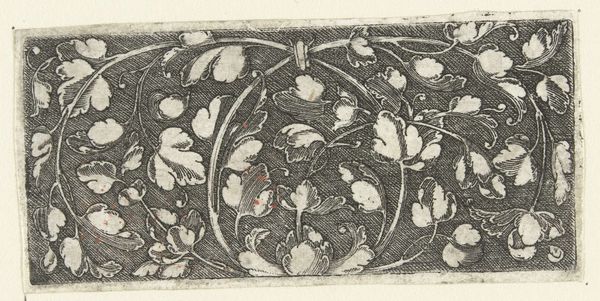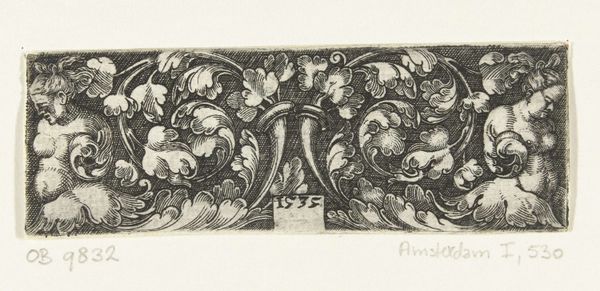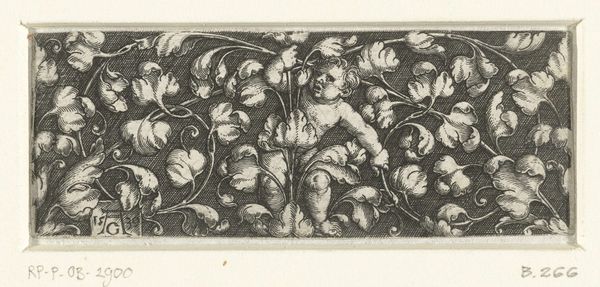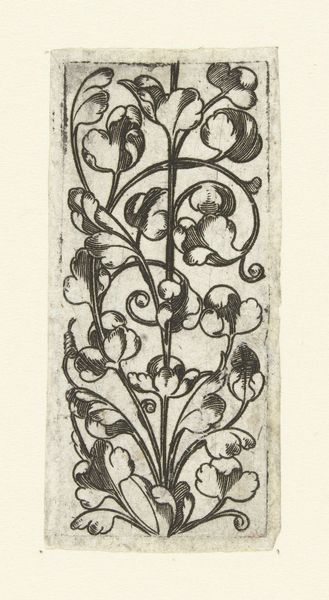
drawing, print, engraving
#
drawing
#
pen drawing
# print
#
northern-renaissance
#
engraving
Dimensions: height 21 mm, width 149 mm
Copyright: Rijks Museum: Open Domain
Curator: Let’s turn our attention to a lovely example of Northern Renaissance decorative arts, a pen drawing and engraving attributed to an anonymous artist active between 1500 and 1600. Its title is "Bladranken die in het midden ontspruiten uit een liggende bloem" or, translated, "Foliage springing from a reclining flower". Editor: The detail is impressive for such a small image, isn’t it? It feels delicate, almost like lace. There is a density, though; a dark ground from which the floral patterns emerge. I find that juxtaposition really compelling. Curator: Absolutely. Consider how this piece functions within its historical context. The late medieval and early Renaissance periods witnessed an explosion in printmaking. Patterns such as these weren’t just aesthetic exercises; they were tools. Editor: Tools? How so? I would have thought that botanical art, for instance, was simply concerned with the beauty of form and color. Curator: Partially, of course. However, this engraving likely served a crucial role in the dissemination of design ideas. Artisans across various disciplines, from metalwork to embroidery, relied on these printed images for inspiration. Imagine this motif gracing the border of a tapestry, the spine of a book, or inlaid into furniture. Editor: So it's about pattern books then? And that grounded dark is in fact negative space awaiting form? The flowers look very familiar. Maybe they have been incorporated into the visual lexicon of heraldry as well. Is it about the way such depictions evoke very strong associations with nobility? Curator: Possibly! These images were commodities with their own circulation patterns, shaped by the era’s social structures and craft guilds. By repeating it, they elevated these common representations and connected them with status. Editor: That idea gives me such a satisfying sense of historical depth. When I see botanical imagery rendered with this level of care and thoughtfulness, I immediately associate it with nature's cycle of death and rebirth and a sense of resilience of something living that continues beyond life. Curator: And that is likely because, in heraldry or elsewhere, this depiction continues through generations of a specific line or family. Very interesting indeed! I hope our listeners will observe even more intriguing narratives woven into this floral design.
Comments
No comments
Be the first to comment and join the conversation on the ultimate creative platform.


